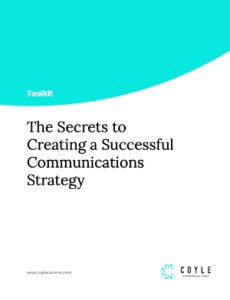Many of us think we have a good brand story. We have the websites, the videos, and the social media channels all working for us. But do we really? Can your audience find the stories and are they simple and straightforward enough to be easily understood?
I just got off the phone with an organization that is about to pitch large donors in Asia, the Middle East and the States as part of a funding drive. However, their brand story has yet to be articulated. The vision statement is there but there are no compelling stories of what they do, why they do it and what the impact of their work is (which is tremendous). Trying to piece together that information is even harder, their “About Us” section leads to their mission statement which is overloaded with technical terms, too complicated for a quick, easy grasp of what they are all about.
Often times this happens when an organization is too inward-focused. And many technicians, academics and experts in different fields are dead-set against simplifying language for the general public, fearing it will distill the purpose and importance of the work that is being done. Nothing could be further from the truth. Your organization’s work will increase in purpose and importance as more people understand and can speak about your work to others.
The general public can be your unofficial ambassadors in good times and bad. Embrace them; do not push them away. And if more of your staff has a straightforward, simple story to tell, it will empower them as ambassadors as well.
How to create your brand story:
Start with your impact. Who is your work reaching? How has it transformed their lives? Look at all aspects of your work – not just the “showcase” projects or stakeholders. Some of the smaller aspects might have the most compelling and heart moving stories.
Identify your history. How was your organization founded? Was there some idea or challenge that resulted in the formation of your organization? How about the founders themselves? What were their personalities and their life stories? What gave them the passion to create the organization?
Look for the evolution. How has the organization changed over time? Why has it changed? What external or internal cause spurred that change? What has resulted from that evolution?
Identify your future. Where is your organization going? What stake in the ground can you claim over the next five years that no one else will? Put real terms and numbers around this.
Make it simple. Your family and friends are the ultimate litmus test. If you tell your organization’s story to your grandmother/father, niece, nephew or child, they should be able to understand it, clearly. Lose the jargon, the technical terms, and tell them what your organization does. If they smile, you have a winner; if they frown, go back to the drawing board.
Make it compelling. It’s crucial in the verbal story telling and especially in your videos. Lose the slow building format, create excitement, use human faces (real ones), and tell that story. Test your story products – if your audience is not moved, you have not created a compelling brand story. You want to MOVE your audience – they will remember you and your brand. For me, if I am speechless or do not move after watching a short film, video or commercial, then it is has passed the litmus test.



